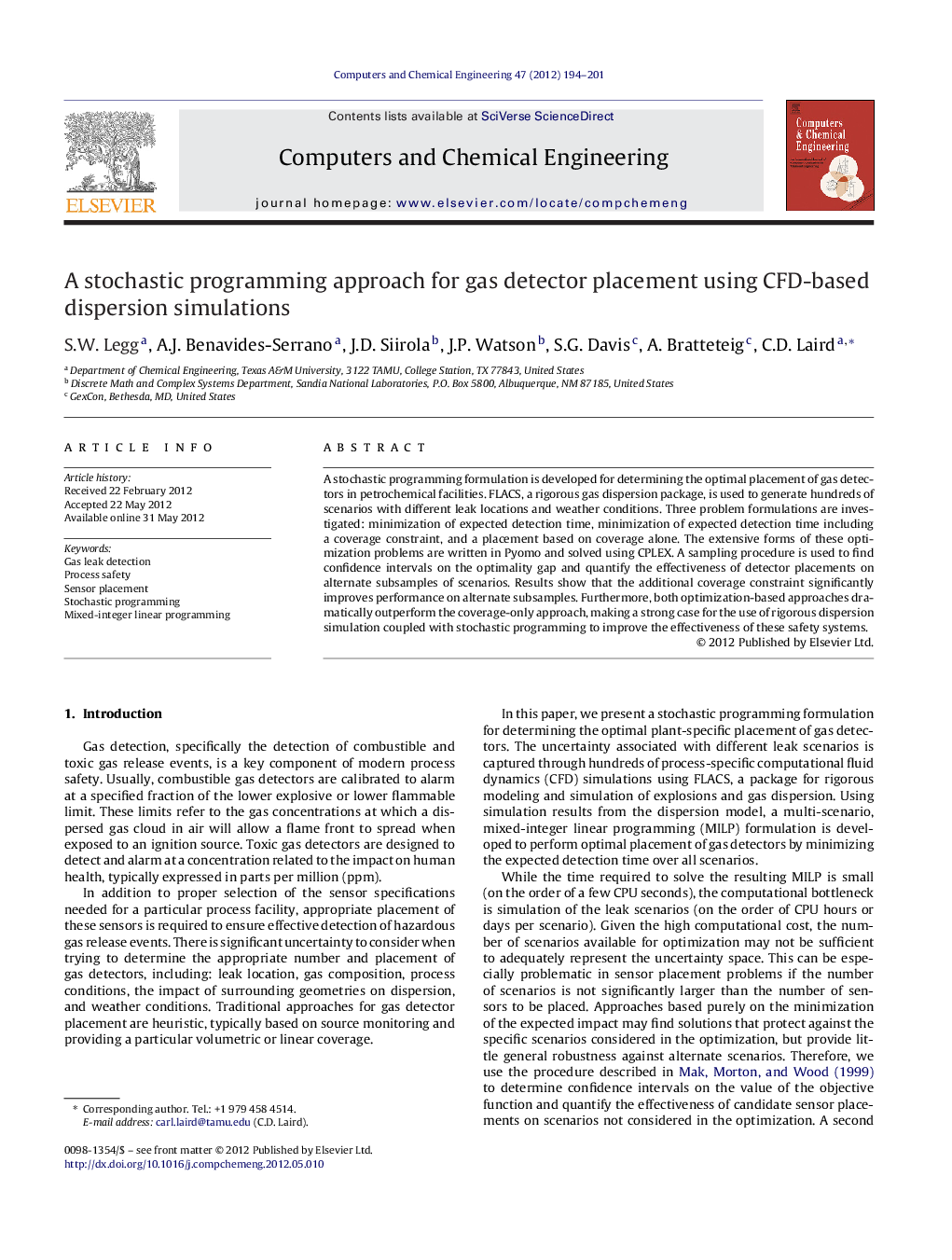| کد مقاله | کد نشریه | سال انتشار | مقاله انگلیسی | نسخه تمام متن |
|---|---|---|---|---|
| 172708 | 458557 | 2012 | 8 صفحه PDF | دانلود رایگان |

A stochastic programming formulation is developed for determining the optimal placement of gas detectors in petrochemical facilities. FLACS, a rigorous gas dispersion package, is used to generate hundreds of scenarios with different leak locations and weather conditions. Three problem formulations are investigated: minimization of expected detection time, minimization of expected detection time including a coverage constraint, and a placement based on coverage alone. The extensive forms of these optimization problems are written in Pyomo and solved using CPLEX. A sampling procedure is used to find confidence intervals on the optimality gap and quantify the effectiveness of detector placements on alternate subsamples of scenarios. Results show that the additional coverage constraint significantly improves performance on alternate subsamples. Furthermore, both optimization-based approaches dramatically outperform the coverage-only approach, making a strong case for the use of rigorous dispersion simulation coupled with stochastic programming to improve the effectiveness of these safety systems.
Journal: Computers & Chemical Engineering - Volume 47, 20 December 2012, Pages 194–201